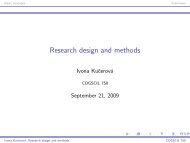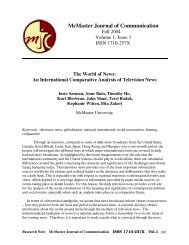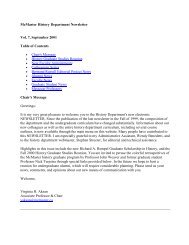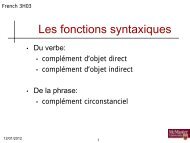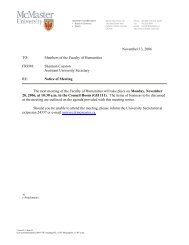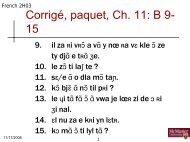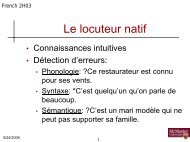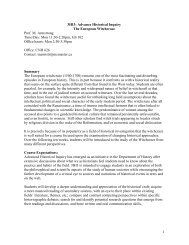handout
handout
handout
Create successful ePaper yourself
Turn your PDF publications into a flip-book with our unique Google optimized e-Paper software.
Ivona Kučerová<br />
UCL, ivona@alum.mit.edu<br />
3 The proposal<br />
Sinn und Bedeutung 12<br />
Oslo September 22, 2007<br />
Basic intuition:<br />
structures are divided into domains and any domain can be partitioned at any position<br />
within the domain [this we learned from basic word orders] (≈ Mathesius’<br />
tradition)<br />
−→ there is a point in the structure from which everything up is given<br />
A formalization: G(iven)-operator<br />
−→ an operator that marks elements in its scope as given; the operator recursively<br />
propagates upwards and it terminates on an atomic semantic type – in our case on<br />
type t (or < s, t >) [a simplifying assumption]<br />
(10) G-operator:<br />
G(B) =<br />
{ λA α : Given(A).G(B A) B is of type < α, β > for some α, β<br />
other than s, t<br />
B for B of type < s, t ><br />
(11) < s, t ><br />
given<br />
given<br />
G<br />
new<br />
new . . .<br />
What the G-operator does for us:<br />
• once the operator starts propagating upwards it doesn’t stop unless it reaches<br />
the edge of a domain → structures are divided into domains in which given<br />
precedes new<br />
• the operator can be inserted at any place → a partition can fall at any place<br />
A note on interpretation of givenness: For concretness, I follow Sauerland (2005)<br />
in assuming that givenness gives rise to an existential presupposition (cf. Schwarzschild<br />
1999). My interest lies in how givenness applies compositionally, the actual lexical<br />
entry is not crucial.<br />
4





